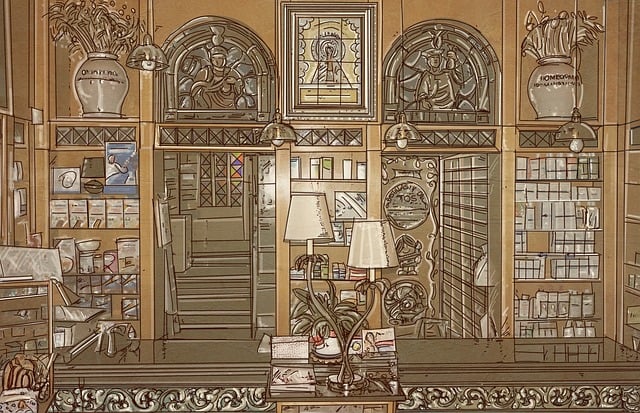Regenerative medicine, driven by advancements in stem cell technology, is becoming more accessible due to reduced costs. Budget-friendly stem cell therapy overcomes previous financial barriers, allowing patients from diverse backgrounds to access cutting-edge treatments. This shift is achieved through innovations in manufacturing, regulatory changes, and strategic partnerships. The future holds promise for personalized regenerative medicine, with tailored therapies gaining traction, particularly in managing chronic conditions. As research progresses and production methods improve, these treatments could revolutionize healthcare by offering effective, long-lasting solutions at a lower societal cost.
In recent years, regenerative medicine has emerged as a game-changer in healthcare, offering promising treatments for various conditions. However, the high cost of stem cell therapy has been a significant barrier to its widespread adoption and accessibility. This article explores strategies to make budget-friendly stem cell therapy a reality, addressing challenges, current solutions, and future prospects. Discover how innovative approaches are revolutionizing affordable access to cutting-edge regenerative medicine, potentially transforming lives globally.
- Understanding Regenerative Medicine and its Potential
- Challenges in Accessing Stem Cell Therapy: The Cost Factor
- Strategies for Making Budget-Friendly Stem Cell Therapy a Reality
- The Future of Affordable Regenerative Medicine: Opportunities and Expectations
Understanding Regenerative Medicine and its Potential

Regenerative medicine is an innovative field that leverages the body’s natural healing processes to repair, replace, or regenerate damaged tissues and organs. At its core, this approach utilizes specialized cells known as stem cells, which have the remarkable ability to differentiate into various types of cells within the body. By harnessing the power of these versatile cells, regenerative medicine holds immense potential to treat a wide range of diseases and injuries that were previously considered incurable or challenging to manage.
Budget-friendly stem cell therapy is becoming increasingly accessible, offering new hope for patients seeking affordable options for cutting-edge treatment. Advances in technology and an expanding understanding of stem cell biology have led to the development of cost-effective methods for extracting, culturing, and deploying these powerful cells. This shift makes regenerative medicine more attainable, allowing individuals from diverse socioeconomic backgrounds to benefit from its transformative capabilities.
Challenges in Accessing Stem Cell Therapy: The Cost Factor

Accessing stem cell therapy has been a challenge for many, primarily due to its high cost. Currently, treatments involving stem cells are often out of reach for most individuals due to the significant financial investment required. The expense is driven by complex production processes and the specialized nature of these therapies, making it a luxury that only a select few can afford. This disparity in access highlights a crucial need for more budget-friendly stem cell therapy options.
Efforts are underway to make this cutting-edge medicine more accessible without compromising quality or safety. Innovations in manufacturing techniques, along with increased competition and regulatory changes, have the potential to reduce costs significantly. Making budget-friendly stem cell therapy a reality would enable a broader range of patients to benefit from its transformative potential, bringing hope for effective treatments for various conditions previously considered out of reach.
Strategies for Making Budget-Friendly Stem Cell Therapy a Reality

Making budget-friendly stem cell therapy a reality requires a multi-faceted approach. Firstly, scaling up production methods can significantly reduce costs by leveraging advanced biomanufacturing techniques and optimized cell cultures. Additionally, exploring alternative sources of stem cells, such as those derived from adult tissues or umbilical cord blood, offers more economical options with comparable therapeutic potential.
Government support and public-private partnerships play a pivotal role in subsidizing research and development, as well as streamlining access to these treatments. Incentives for pharmaceutical companies and startups to invest in affordable manufacturing processes can accelerate the availability of budget-friendly stem cell therapy. Furthermore, innovative clinical trial designs that combine multiple therapies or involve larger patient cohorts could help spread the costs while providing valuable data for regulatory approval.
The Future of Affordable Regenerative Medicine: Opportunities and Expectations

The future of regenerative medicine looks promising, especially in terms of making it more accessible and affordable for a wider population. Advances in technology and manufacturing processes are driving down the cost of producing therapeutic cells, including stem cells. This trend opens up exciting opportunities to transform healthcare by offering budget-friendly stem cell therapy as a viable treatment option for various conditions.
The expectation is that personalized medicine approaches will become more prevalent, enabling precise treatments tailored to individual needs. As research progresses and production scales up, the potential for widespread adoption of regenerative therapies increases, especially in addressing chronic diseases and injuries. Making these cutting-edge treatments accessible could revolutionize healthcare systems, providing effective, long-lasting solutions while reducing the burden on patients and society.
Budget-friendly stem cell therapy is not just a concept but an emerging reality. By addressing the cost challenges through innovative strategies, the field of regenerative medicine is opening doors for wider access. As we look to the future, it’s anticipated that advancements in technology and production methods will continue to drive down costs, making this life-changing treatment more accessible to those who need it most. This shift has the potential to transform healthcare globally, ensuring that cutting-edge regenerative therapies are no longer a luxury but a viable option for enhancing and restoring quality of life.
